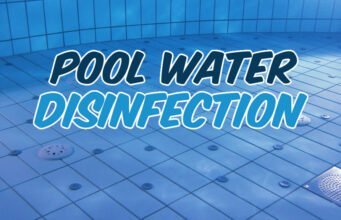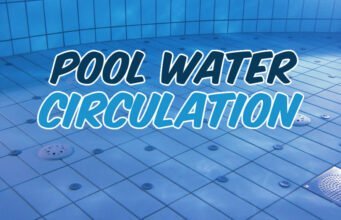Another term that is frequently heard when it comes to pool treatment is “alkalinity.”
As our specialty is the pool industry, we’ve already talked extensively about how to treat your pool!
We’ve already written about the physical treatment of the pool, which includes skimming, filtration, pool brushing, and even controlling the pool’s chemical parameters such as chlorine, pH, and alkalinity.
We’ve written a complete article discussing the importance of controlling the pool’s pH.
Today we’ll talk about the importance of controlling the pool’s alkalinity.
Are you ready to learn everything about alkalinity?
What is alkalinity?
Before discussing the importance of controlling pool alkalinity, let’s first clarify what this alkalinity is.
We can define Alkalinity as the pool’s ability to neutralize acids, thus maintaining its pH stable.
It is a capacity parameter, not an intensity parameter (like pH).
This explains why a pool can have a neutral pH and still have high or low alkalinity.
Alkalinity is mainly due to carbonates and bicarbonates, and secondarily to hydroxide, silicate, borate, phosphate, and ammonia ions.
Total Alkalinity is the sum of the alkalinity produced by all of these ions.
It’s not possible for three forms of alkalinity to exist in the same pool due to the chemical reaction of the bicarbonate ion with the hydroxide ion, where the bicarbonate ion acts as a weak acid in the presence of a strong base.
But wait! This isn’t a chemistry class, right? So let’s get to the point…
What is the importance of pool alkalinity?
Now that you know what pool water alkalinity is, let’s clarify the importance of maintaining control over the water’s alkalinity.
Why control pool alkalinity
Well, here at PoolPiscina.com, we always say that before adding chlorine or any other chemical product to the pool, it is essential to adjust the water’s pH and alkalinity.
Although all parameters influence the chemical balance of the water and the comfort of swimmers, special attention should be paid to alkalinity, which when maintained within the ideal range, provides pH stability, avoiding frequent corrections, which generates savings and greater practicality.
Alkalinity is defined as the amount of substances present in the water capable of neutralizing acids.
In other words, alkalinity acts as a pH buffer, preventing variations, and is measured in ppm (parts per million), with the ideal range for a pool being between 80 and 120 ppm.
Alkalinity analysis can be performed using an Alkalinity Test Kit or with Test Strips.
We strongly recommend checking both pH and alkalinity with the test kit, as it is much more accurate than the strips!
In summary, alkalinity should be controlled to have stable pH!
So, how do you adjust this important parameter?
How to adjust the pool’s alkalinity
Just like with pH, you’ll usually find that the pool’s alkalinity is too low.
That is, the alkalinity tends to go down!
If this happens and the alkalinity is below 80 ppm, use an alkalinity increaser (sometimes called pH stabilizer or Stable pH), which raises the alkalinity and stabilizes the pH.
However, if the alkalinity is high, exceeding 200ppm, apply pH and alkalinity reducer.
We recommend correcting alkalinity only when values exceed 200ppm because some factors can contribute to its spontaneous reduction, as happens with the pool’s pH.
What happens if the pool’s alkalinity is low?
The main problems that can occur if you leave your pool’s alkalinity at low levels are:
- The water tends to become cloudy.
- The water easily takes on a green tint, even if it’s translucent.
- The water easily becomes dull and loses its shine.
- The pool water becomes corrosive.
- The pool’s pH tends to fluctuate too much, increasing the number of corrections and consequently the cost of treatment.
- Chlorine tends to lose its algaecidal effect due to pH changes, which can take on a greenish hue.
What happens if the pool’s alkalinity is high?
- Water turbidity
- Opaque water, without shine
- Formation of encrustations in the pool pipes
- Excessive spending on chemicals
I believe it’s clear now that we can’t neglect and must always control the alkalinity of the pool.
If you enjoyed the article, give it a thumbs up by clicking on “Like” and share it with your friends!
After all, you shouldn’t be the only one suffering from uncontrolled pool alkalinity, right?
For more advanced information on pool pH and alkalinity, read our article “Controlling Pool pH and Alkalinity – Advanced”.
If you have any questions about water alkalinity, use the comments section below, okay?










